Samsung SSD 850 Pro (128GB, 256GB & 1TB) Review: Enter the 3D Era
by Kristian Vättö on July 1, 2014 10:00 AM ESTRandom Read/Write Speed
The four corners of SSD performance are as follows: random read, random write, sequential read and sequential write speed. Random accesses are generally small in size, while sequential accesses tend to be larger and thus we have the four Iometer tests we use in all of our reviews.
Our first test writes 4KB in a completely random pattern over an 8GB space of the drive to simulate the sort of random access that you'd see on an OS drive (even this is more stressful than a normal desktop user would see). We perform three concurrent IOs and run the test for 3 minutes. The results reported are in average MB/s over the entire time.
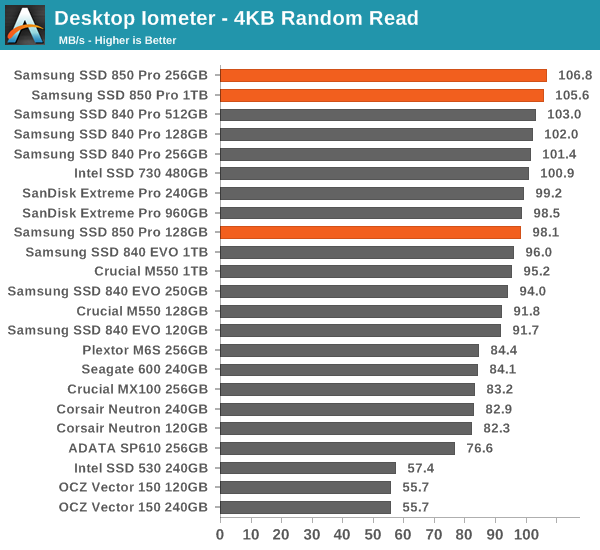
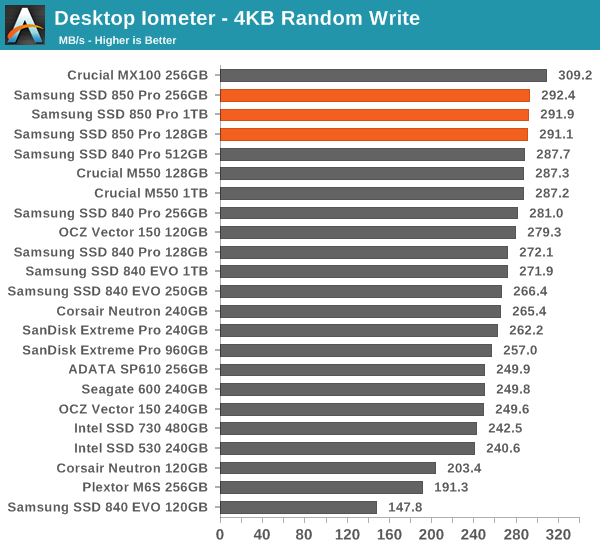
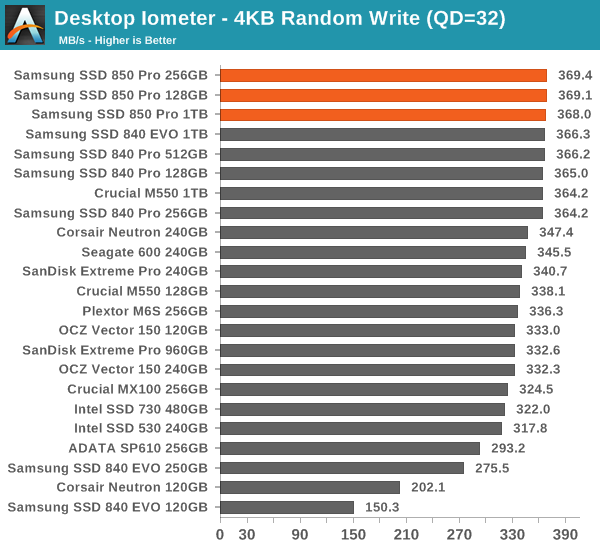
Random performance is also brilliant and the 850 Pro tops almost all of our benchmarks. It is no wonder why it is so fast in the Storage Benches.
Sequential Read/Write Speed
To measure sequential performance we run a 1 minute long 128KB sequential test over the entire span of the drive at a queue depth of 1. The results reported are in average MB/s over the entire test length.
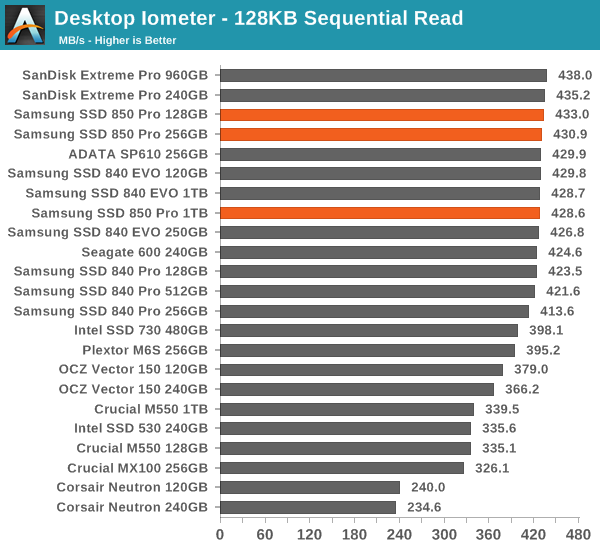
The same goes for sequential speeds. Of course, the differences are not substantial but nevertheless the 850 Pro is fast.
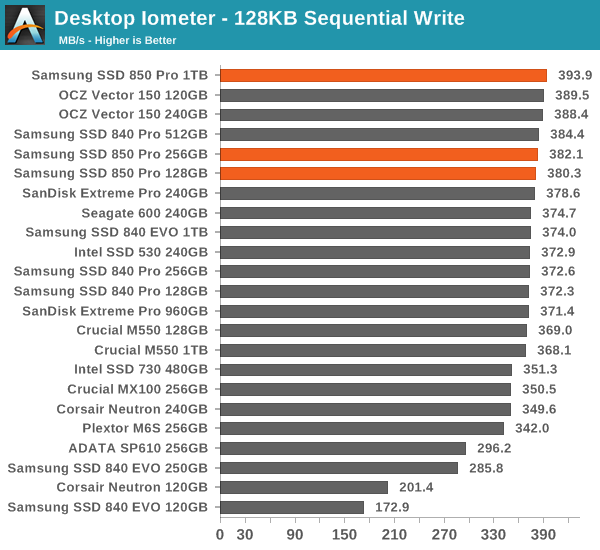
AS-SSD Incompressible Sequential Read/Write Performance
The AS-SSD sequential benchmark uses incompressible data for all of its transfers. The result is a pretty big reduction in sequential write speed on SandForce based controllers, but it doesn't impact most of the other controller much if at all.












160 Comments
View All Comments
Cerb - Tuesday, July 1, 2014 - link
"cheese in in" -> "cheese in it"?Cerb - Tuesday, July 1, 2014 - link
The above was meant to not be a reply to yours. In general, there's isn't much, though, because with SATA, we're still stuck needing striped RAID to improve bandwidth. Assuming they can keep costs in check, the rapid shrinking,m and thus capacity increases over the next few years, will give us something much more useful. That said, it's nice that they caught up in terms of consistency.Donuts123 - Sunday, July 6, 2014 - link
More relevantly, the 150TB warranty figure applies to all capacities. All things being equal, a 128GB drive with 150TB written will have the same amount of flash wear as a 1TB drive with 1200TB written.So in practice the 1TB model will have far higher endurance than 150TB. But its warranty will expire when its flash is only 12.5% worn. Samsung aren't the only manufacturer to have low TBW warranty figures; Micron/Crucial does it as well, with the same TBW figure for all drive capacities.
8steve8 - Tuesday, July 1, 2014 - link
Yawn. Another SATA 2.5" SSD.How does this compare to m.2 PCIe drives like the XP941 and M6e?
Will we see m.2 PCIe NVMe drives before xmas?
Kristian Vättö - Tuesday, July 1, 2014 - link
The 850 Pro is now in the Bench so you can compare the two easily:http://www.anandtech.com/bench/product/1201?vs=125...
8steve8 - Tuesday, July 1, 2014 - link
thanks, the XP941 demolishes this thing, why isn't it in the charts of this review? clearly PCIe m.2 would be on the radar for anyone looking for a high end SSD these days... ?it may not be readily available in the channels, but it is a taste of what is to come... personally I just got a 256GB plextor M6e PCIe m.2 for $220. It's easy to find in the market.
Kristian Vättö - Tuesday, July 1, 2014 - link
I didn't want to put the XP941 in the graphs because the availability and support are relatively limited and it would have broken some of the graphs.zmeul - Tuesday, July 1, 2014 - link
just a quick dumb question:the bandwidth for SATA 3.0 - 6 Gbit/s is 600 MB/s right? so, it's 300MB/s read and 300MB/s write
correct ?
thesavvymage - Tuesday, July 1, 2014 - link
no, its 600MB/s in total in either direction. you can max the 600 read if you arent doing any writes, etc. It isnt 300 max per direction, its 600 max for total data bandwidthzmeul - Tuesday, July 1, 2014 - link
yes, I forgot to mention, duplex (at the same time) 300r+300w